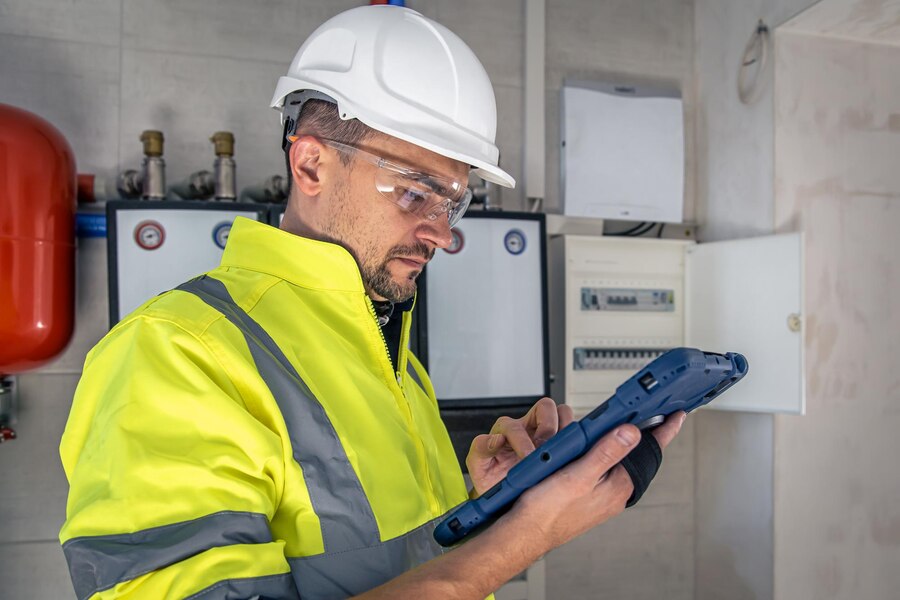Streamlining Fire Alarm Test and Inspection: The Power of Software Solutions

Introduction
In the dynamic landscape of fire safety, the integration of technology has brought forth significant advancements, especially in the realm of fire alarm test and inspection. This article delves into the specific application of software solutions in streamlining the testing and inspection processes of fire alarm systems. We will explore how these technologies not only automate but also enhance the efficiency and accuracy of ensuring that fire alarm systems are in optimal working condition.
The Critical Role of Fire Alarm Test and Inspection
Why Regular Testing Matters
Before delving into the power of software solutions, it’s crucial to understand the importance of regular fire alarm testing and inspection. Fire alarm systems are a lifeline in emergencies, providing early detection and alerting occupants to potential dangers. Regular testing ensures that these systems are functioning correctly, minimizing the risk of false alarms or, more critically, failures during an actual emergency.
The Limitations of Traditional Approaches
Manual Processes and Challenges
Historically, fire alarm testing and inspection have been manual processes, involving physical checks and assessments. While these methods are effective to some extent, they come with challenges such as time consumption, the potential for human error, and difficulties in maintaining detailed records. As buildings and facilities become more complex, the need for a more efficient and systematic approach becomes evident.
The Automation Revolution: Software Solutions
1. Automated Inspection Scheduling: Ensuring Timely Checks
Software solutions dedicated to fire alarm testing and inspection bring automation to the scheduling process. These systems allow users to set up regular inspection schedules, ensuring that no system goes unchecked for an extended period. Automation reduces the likelihood of oversights and ensures that inspections occur in a timely manner, aligning with regulatory requirements.
2. Remote Monitoring and Diagnostics: Enhancing Efficiency
One of the significant advantages of fire alarm software solutions is the ability to remotely monitor and diagnose system performance. Instead of relying on on-site inspections for every issue, technicians can receive real-time alerts and diagnostic data, allowing them to pinpoint potential problems and address them promptly. This not only saves time but also minimizes downtime for the fire alarm system.
3. Comprehensive Reporting Capabilities: Documentation Made Easy
Software solutions offer robust reporting capabilities, allowing for the generation of detailed and comprehensive reports on the status of each fire alarm system. These reports can include information on past inspections, identified issues, and the resolution of problems. Having a well-documented history provides valuable insights for system maintenance, regulatory compliance, and troubleshooting.
Exploring Different Software Options
1. Dedicated Fire Inspection Software: Tailored for Compliance
Dedicated fire inspection software is designed specifically for the needs of fire safety professionals. These solutions often include features such as compliance tracking, automated scheduling, and customizable reporting. They are tailored to meet regulatory requirements, making them a comprehensive choice for organizations that prioritize adherence to fire safety standards.
2. Integrated Building Management Systems (BMS): Holistic Approach
Some organizations prefer an integrated approach, incorporating fire alarm test and inspection functionalities into their broader Building Management Systems (BMS). This approach allows for a holistic view of various building systems, including HVAC, lighting, and security. Integration ensures that fire alarm testing is seamlessly woven into the overall management of the facility.
3. Cloud-Based Solutions: Flexibility and Accessibility
Cloud-based fire alarm test and inspection software solutions offer the advantage of flexibility and accessibility. Users can access the system from anywhere with an internet connection, making it particularly convenient for organizations with multiple locations. Cloud-based solutions also often include automatic updates, ensuring that users benefit from the latest features and security enhancements.
Case Studies: Success Stories of Software Implementation
1. Reducing Inspection Time and Costs in Large Facilities
A multinational corporation managing extensive office spaces implemented dedicated fire inspection software, resulting in a significant reduction in inspection time and associated costs. The software’s automation features allowed for efficient scheduling, remote monitoring, and quick issue resolution. The centralized reporting system also streamlined compliance documentation, ensuring that all facilities met regulatory standards.
2. Enhancing Reliability in Healthcare Environments
A major healthcare institution integrated fire alarm testing and inspection functionalities into its broader BMS. The integrated system provided a centralized platform for managing various building systems, enabling the facility to prioritize fire safety seamlessly. Real-time monitoring and diagnostics proved instrumental in maintaining the reliability of critical fire alarm systems in healthcare environments.
Future Trends and Innovations
1. IoT Integration: Connecting Systems for Smarter Insights
As technology evolves, the integration of Internet of Things (IoT) devices is becoming a prominent trend in fire alarm systems. Software solutions are adapting to incorporate IoT sensors and devices that provide real-time data on the condition of components, enabling predictive maintenance and enhancing overall system intelligence.
2. Machine Learning for Predictive Analytics: Anticipating Issues
Machine learning algorithms are increasingly being employed to analyze data from fire alarm systems. These algorithms can identify patterns and trends, allowing for predictive analytics. By anticipating potential issues before they occur, organizations can take proactive measures to address concerns, further enhancing the reliability of fire alarm systems.
Conclusion: Elevating Fire Safety Through Technology
In conclusion, the application of software solutions in the realm of fire alarm test and inspection represents a transformative leap toward more efficient, reliable, and compliant fire safety practices. The automation of inspection scheduling, remote monitoring capabilities, comprehensive reporting, and the variety of software options available contribute to an enhanced overall experience.
As organizations embrace these advancements, they not only streamline their fire safety processes but also contribute to a safer and more secure environment for occupants. The success stories of software implementation and the future trends in IoT integration and machine learning illustrate the ongoing commitment to innovation in the field of fire safety.
Ultimately, the power of software solutions lies not only in their ability to automate and optimize but also in their potential to elevate fire safety to new heights. With technology as a key ally, organizations can ensure that their fire alarm systems are not just functional but robust, reliable, and ready to respond in times of need. Cheers to the future of fire safety, where technology and automation converge to safeguard lives and property.




